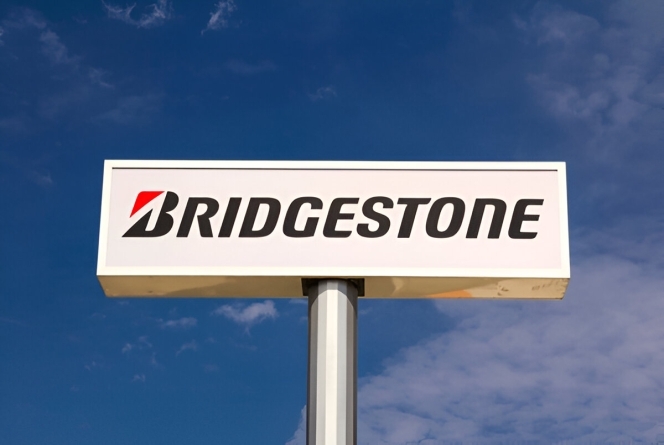Goodyear India Uncovers INR 39 Mln Tyre Theft at Ballabgarh Plant
- By Sharad Matade
- July 07, 2025

Photo Credit: Shutter Stok
Investigation reveals coordinated theft by contractors and employees through bulk pilferage and excess loading schemes
Goodyear India Limited disclosed that a comprehensive investigation by Ernst & Young uncovered a sophisticated theft operation at its Ballabgarh manufacturing plant, resulting in the loss of 4,571 tyres valued at approximately INR 39.11 million.
The tyre manufacturer’s board reviewed the investigative findings during a meeting that concluded last week, revealing what the company described as “potential theft of tyres in bulk by contractual workers involved in security, warehousing and loading operations, acting in collusion.”
Dual Theft Operations Exposed
The Ernst & Young investigation, spanning October 2023 to November 2024, identified two primary theft methods that enabled the systematic pilferage of farm tyres from the Faridabad-based facility.
Bulk Theft Scheme: The more significant operation involved truckloads of tyres being removed from the plant through coordination between third-party loading supervisors, warehouse workers, security guards, and external accomplices. Electronic communications reviewed by investigators revealed references to 4,057 tyres across 20 dates between July and December 2024, with detailed SKU counts discussed among the conspirators.
Security records were deliberately manipulated to conceal the theft, with one security contractor admitting to accepting kickbacks from a loading supervisor to avoid recording truck details carrying stolen merchandise.
Excess Loading Operation: A secondary scheme involved loading additional tyres beyond invoiced quantities onto legitimate shipments, with the excess stolen during transit. The investigation revealed a significant increase in overweight dispatches during the July-November 2024 period, with 50 per cent of overweight trucks dispatched during this timeframe, compared to historical patterns.
Quality assurance protocols were compromised, with one employee admitting to receiving instructions from a third-party warehouse vendor to disregard overweight trucks and dispatch them without conducting mandatory quality studies. The employee estimated that 5-6 excess tyres were loaded per truck in select shipments to Goodyear warehouses.
Quality Control Manipulation
The investigation also uncovered systematic inflation of tyre rejection quantities during pre-dispatch inspections. A quality assurance employee acknowledged receiving kickbacks to artificially inflate rejected tyre counts in daily reports, despite no physical rejections having occurred, allegedly to help manage inventory shortfalls maintained by the third-party warehouse vendor.
Data analysis revealed an increase in rejection rates in 2024 compared to 2023, with the manipulation involving collusion between employees and third-party quality inspectors.
Operational Control Gaps
Beyond the theft schemes, Ernst & Young identified significant weaknesses in Goodyear’s inventory management and production processes. The manual production handover system lacked proper verification, with multiple employees admitting that the defined processes weren’t followed.
Production records maintained manually revealed discrepancies, with multiple spreadsheets containing different production numbers for the same periods. The investigation found that production during shutdown periods wasn’t recorded in the Production Management Information System, creating variances that couldn’t be validated due to unreliable manual records.
Financial Impact and Response
The financial impact of the inventory shortage identified in November 2024 was already recognised in Goodyear India’s financial statements for the quarter ended 31 December 2024. “The management has taken cognisance of the findings and initiated appropriate legal and disciplinary actions against those involved,” the company stated in its regulatory filing. “Proactive measures, including a site security assessment and tightened controls, have been implemented.”
Investigation Methodology
Ernst & Young’s fact-finding review employed comprehensive investigative techniques, including data analytics, transaction testing, background checks on suspected third parties, forensic imaging of electronic devices, and interviews with employees and contractual workers.
The investigation covered electronically stored information from the laptops and server backups of suspected individuals, utilising keyword-based searches to identify suspicious communications that proved crucial in establishing the theft patterns.
Regulatory Compliance
The disclosure fulfils Goodyear India’s obligations under Regulation 30 of the Securities and Exchange Board of India’s Listing Obligations and Disclosure Requirements Regulations, 2015. The company initially informed stock exchanges of the inventory variance on 12 February 2025.
“The Company remains committed to upholding the highest standards of corporate governance and safeguarding stakeholder interests,” Goodyear India stated in its filing.
Titan International Announces Official Partnership With NASCAR Driver Ross Chastain
- By TT News
- December 19, 2025

Titan International Inc. is embarking on an official partnership with NASCAR competitor Ross Chastain, who is also an eighth-generation watermelon farmer. This alliance extends far beyond traditional sponsorship, focusing instead on direct agricultural support. Titan is integrating its expertise into the daily operations of the Chastain family farm, where company specialists are collaborating alongside Melon 1 to address the distinct challenges of watermelon cultivation.
The farm’s diverse fleet, which includes everything from primary tractors to specialised sprayers and utility vehicles, requires a wide array of tyre specifications. Titan is supplying a comprehensive portfolio of products and tailored support for this entire equipment lineup, aiming to enhance operational efficiency and minimise potential downtime.
Chastain’s national profile uniquely bridges the worlds of high-speed racing and foundational farming. Leveraging his platform as NASCAR’s prominent ‘agriculture guy’, this partnership is designed to generate meaningful awareness for the broader farming community. The initiative underscores a shared mission to recognise the critical innovations and relentless effort of agricultural professionals who support global supply chains. Ultimately, it represents a functional fusion of motorsport visibility and tangible, on-farm problem-solving.
Chastain said, “I grew up farming watermelons with my family, and that will always be a part of who I am. What excites me about working with Titan is that they’re actually on the farm, looking at our equipment and helping us find real solutions. I trust Goodyear tyres on the track, and now I trust Titan and Goodyear Farm Tires on our farm. That’s what 'Ag to Asphalt' means to me.”
Scott Sloan, Global Ag/LSW Product Manager, Titan, said, “Watermelon farming has unique demands across a wide range of equipment. Our goal is to make each machine perform at its best. If Ross trusts Titan on his farm, that tells other farmers they can trust us too.”
Kim Boccardi, VP – Marketing, Titan, said, “For Titan, this partnership represents exactly what we stand for. We’re here to listen, to learn and to provide the service, support and expertise farmers want and need. Ross and his family welcomed us onto their farm, and together we’re showing the industry that if a machine needs tyres, whether it's tractors, trailers, ATVs or UTVs, we’ve got it handled.”
Radar Tyres Appoints Cricket Icon Michael Clarke As Global Brand Ambassador
- By TT News
- December 19, 2025
Radar Tyres has entered a strategic global partnership with celebrated Australian cricketer Michael Clarke, appointing him as the company's new brand ambassador. This alliance represents a significant step in the brand's ongoing development, aimed at bolstering support for its international network of distributors and retailers. Clarke’s worldwide recognition and respected legacy are intended to elevate Radar’s visibility and deepen its connection with consumers across key markets.
The brand emphasises that Clarke's professional attributes – encompassing peak performance, resilience and leadership – perfectly mirror its own core mission of delivering high-quality, premium performance tyres to everyday drivers globally. His celebrated career, which includes captaining Australia to a 2015 Cricket World Cup victory and achieving an iconic Test score of 329 not out, has cemented his status as a sporting legend. Beyond the field, his influence extends through media engagements, business ventures, and a substantial digital footprint, allowing him to connect authentically with diverse, worldwide audiences.
This collaboration is a cornerstone of Radar Tyres' long-term strategy to invest in meaningful brand elevation. By partnering with influential figures like Clarke, the company seeks to authentically amplify its message and mission. The initiative will be supported by a comprehensive series of online and on-ground activities, all designed to actively engage consumers and drive the brand’s presence into households worldwide, thereby providing substantive support to its retail partners.
Clarke said, “I’m thrilled to join the Radar Tyres family. Radar Tyres is a dynamic, fast-growing brand whose mission to make high-quality, high-performance tyres accessible to everyday drivers around the world, truly resonates with me. They deliver premium products at an affordable price, and I’m excited to be part of their journey in bringing this mission to even more drivers globally.”
G S Sareen, President and CEO, Omni United, said, “We are thrilled to welcome Michael Clarke to the Radar family. Michael is a household name whose passion, accomplishments and global appeal make him an ideal ambassador to elevate our brand. His association will help us connect more meaningfully with everyday drivers who seek reliable, premium performance but at an accessible price. This partnership will expand our reach, strengthen our presence in key markets and further reinforce Radar Tyres as a trusted and fast-growing global brand.”
Bridgestone Recalls Select Firestone Tyres Over Potential Belt Separation Risk
- By TT News
- December 19, 2025

Bridgestone Americas is voluntarily recalling 1,742 Firestone Destination LE3 all-season tyres produced for the US market. The affected tyres, size 265/70R17, were manufactured at the company's Wilson, North Carolina, facility between 26 October 2025 and 8 November 2025. An internal review identified a production error that could lead to an increased risk of belt separation over the tyre's life, reducing its expected durability. As a result, these tyres may not meet the endurance specifications of the relevant U.S. Federal Motor Vehicle Safety Standard. The recall is being undertaken as a precautionary measure, and Bridgestone confirms it is not aware of any related accidents or injuries.
The company is contacting all known customers, distributors and dealers. Owners can bring their vehicles to any authorised Bridgestone or Firestone retail outlet for a complimentary inspection. If a tyre is confirmed to be part of the recall, it will be replaced at no cost with a comparable Bridgestone or Firestone tyre, or another suitable alternative. Bridgestone has formally notified the appropriate US regulatory agency in compliance with legal requirements. The recall pertains exclusively to replacement tyres used on light trucks, crossovers and SUVs.
The details are given below:
- Firestone Destination LE3 tyres in size 265/70R17
- Plant ID: 1W2
- Size Code: 1Y
- Optional Code: LE31
- Beginning Date Code: 4325
- Ending Date Code: 4425
Anyline Surpasses 100 Million Digital Tyre Inspections Globally
- By TT News
- December 19, 2025

Anyline, a prominent provider of AI-driven mobile tyre inspection technology, achieved a significant landmark in 2025 by completing over 100 million digital tyre inspections globally in a single year. This milestone underscores the widespread integration of its software within automotive service environments, where dealerships, tyre retailers and repair shops rely on its precise and rapid performance under real workshop conditions.
The practical benefits of this technology are substantial for service technicians. It enhances operational consistency on the shop floor, leading to greater overall efficiency and increased customer satisfaction while also creating avenues for additional revenue. Its proven effectiveness at an enterprise level is demonstrated through its adoption by major aftermarket players like Discount Tire and partners such as Tire Storage Solutions.
On a practical level, digital tyre inspection standardises procedures and record-keeping in the service bay. This contributes directly to safety by facilitating the early detection of worn treads and potential hazards. It also improves regulatory compliance through the consistent digital capture of tyre details, including identification numbers. Furthermore, the technology provides valuable performance insights by tracking wear patterns over time, builds customer trust with clear visual documentation and drastically cuts down on manual labour. Cumulatively, these millions of inspections represent immense time savings, helping businesses address ongoing workforce challenges and operational demands.
To further broaden its reach, Anyline has expanded its offerings beyond the ready-made TireBuddy App that it released earlier this year. The company now provides the TireBuddy ToolKit, a highly customisable software development kit. This toolkit allows enterprise and platform partners to embed sophisticated tyre inspection functionalities – including tread depth measurement, tyre identification and condition assessment – directly into their own existing mobile applications on both iOS and Android. Designed for seamless integration and real-world use, it features intuitive guidance to help technicians achieve reliable, uniform results across various locations.
Lukas Kinigadner, Co-CEO, Anyline, said, “Surpassing 100 million tyre inspections in a single year is a defining moment for Anyline and the industry. Tyre inspection isn’t a nice to have; it’s a safety-critical process that depends on consistency and accuracy at scale. We’re on a mission to transform that process with fast, accurate and dependable digital assessments that make technicians’ work easier and keep the customer experience at the centre. This milestone is a strong signal that we’re on the right track.”
Simon Brooks, Vice President – Product, Anyline, said, “With our TireBuddy ToolKit, our goal is to make advanced tyre inspection as easy as adding an SDK into an existing app. We’re excited to see how our customers customise it for their workflows, and we look forward to TireBuddy powering even more safe, consistent tyre inspections in 2026.”







Comments (0)
ADD COMMENT